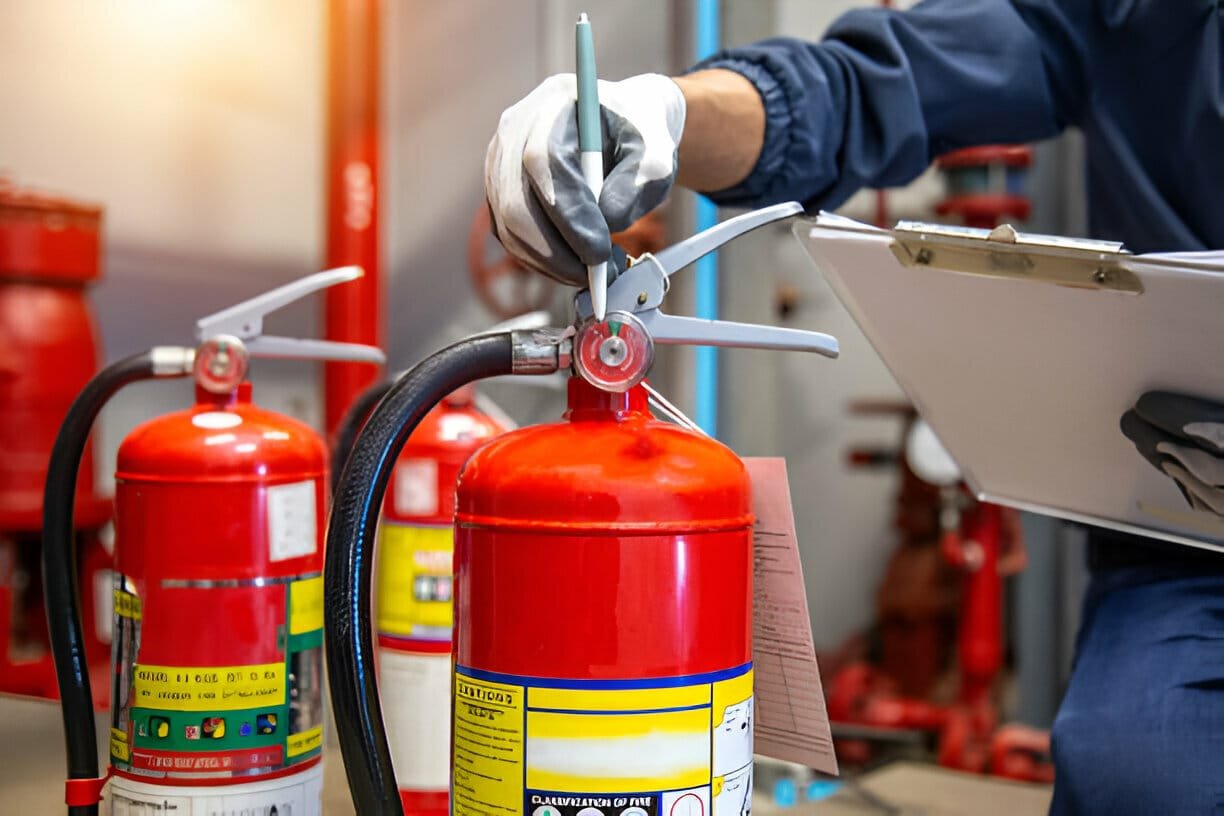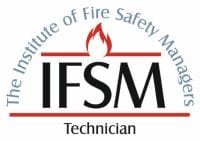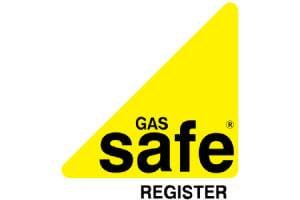
The’UK Fire Safety Certificate Guide 2025′ is an essential resource for property owners dealing with laws, outlining the steps for obtaining and renewing certificates. Understanding the significance of these certificates can significantly impact property management and occupant safety. However, the process often involves many challenges. Analysing these complexities can offer valuable insights for better compliance and improved safety measures.
Key Takeaways
- This Certificate is essential for demonstrating adherence to UK fire safety regulations, especially for commercial buildings.
- Property owners must conduct thorough fire risk assessments and maintain detailed safety records to stay compliant.
- Certificates typically require renewal every five years, but the exact requirements vary based on property type and local regulations.
- Regular audits, staff training, and updating fire safety measures are essential for maintaining compliance and ensuring successful renewal.
- Knowing the distinctions between a Fire Safety Certificate and a fire risk assessment is essential for effective fire safety management.
What Is a Fire Safety Certificate?
This certificate serves as a crucial document that demonstrates compliance with UK fire safety regulations. It is issued after a thorough evaluation of a property’s fire safety measures, confirming that the appropriate precautions are in place to protect occupants and property from fire risks. The process typically involves inspecting fire alarms, emergency exits, and fire-resistant materials within the building.
In the UK, certificates are particularly important for commercial properties, where the risk of fire can have devastating consequences. They signify that the owner has implemented measures to reduce fire risks and meet legal requirements. They reassure occupants and assist local authorities in enforcing safety standards.
Why a Fire Safety Certificate Is Important for Property Owners
Obtaining a certificate is vital for property owners as it demonstrates their commitment to occupant safety and safeguarding their investment. This certificate proves that the property complies with established fire safety standards, which can considerably decrease the likelihood of fire-related incidents.
Obtaining this certification demonstrates property owners’ proactive commitment to risk management, promoting safety for both tenants and visitors.
It can also boost the property’s value, reassuring potential buyers or renters about its safety. Furthermore, possessing a certificate might lower insurance costs, since insurers tend to favour properties that follow safety regulations.
UK Regulations and Legal Duties for a Fire Safety Certificate
Fire safety regulations in the UK set out specific legal requirements for property owners concerning the obtaining and upkeep of certificates. These certificates are essential for proving compliance with fire safety laws and safeguarding occupants.
- Risk Examination: Perform a comprehensive fire risk assessment to pinpoint potential hazards and put in place essential safety measures.
- Documentation: Maintain accurate records of fire safety measures, including evacuation plans and maintenance of fire safety equipment.
- Regular Reviews: Review and update the fire safety certificate periodically or whenever significant changes occur in the building’s layout or occupancy.
Failure to meet legal requirements can lead to penalties and liability if there’s a fire. Therefore, all UK property owners must understand and comply with these regulations.

The Significance of a Fire Safety Certificate for Building Security
The certificate ensures building safety by confirming compliance with fire safety regulations.
This certificate confirms that the building complies with the Fire Safety Order, which mandates adherence to particular safety standards to safeguard occupants and property. It assesses essential components, including fire detection systems, emergency exits, and overall fire risk evaluations.
Step-by-Step Process to Get a Fire Safety Certificate
Property owners navigating fire safety regulations need to follow a structured process to obtain a fire safety certificate. This guarantees adherence to legal standards and enhances safety for all occupants.
- Assessment: A comprehensive fire risk assessment should be carried out initially. This identifies potential hazards and evaluates existing safety measures.
- Implementation: Following the assessment, necessary improvements must be implemented. This may include installing smoke alarms, fire extinguishers, or enhancing escape routes.
- Application: Finally, property owners can submit their application for the fire safety certificate to the local fire authority. Accompanying documentation, including the fire risk assessment and proof of implemented changes, is typically required.
Fire Safety Certificate for Landlords: Legal Duties Explained
Landlords hold essential legal duties related to fire safety in their properties, which makes it crucial to understand the steps for acquiring a Fire Safety Certificate. This certificate confirms that the property complies with key fire safety regulations, thereby ensuring the safety of tenants and visitors.
Compliance with the Regulatory Reform (Fire Safety) Order 2005 is crucial, as it mandates that common areas within multi-occupancy buildings adhere to strict fire safety regulations.
Additionally, landlords are responsible for maintaining and regularly testing fire safety equipment, including alarms and fire extinguishers.
Not obtaining a valid fire safety certificate can lead to legal penalties, including fines and damages if a fire occurs. Landlords should prioritise fire safety to protect tenants and properties.
Fire Safety Certificate vs. Fire Risk Assessment: Key Differences
Understanding the distinctions between a fire safety certificate and a fire risk assessment is vital for effective fire safety management. Both play important roles, yet they serve different functions.
- Purpose: A certificate is an official document confirming compliance with fire safety regulations, while a fire risk assessment identifies potential fire hazards and evaluates risks within a property.
- Process: Obtaining a certificate typically involves an inspection by a certified authority. A fire risk assessment can be done internally or by a qualified professional to evaluate safety measures.
- Frequency: Certificates often have a specific validity period, requiring renewal. Conversely, fire risk assessments should be reviewed regularly or whenever significant changes occur in the premises.
Understanding these differences helps guarantee that both documents effectively contribute to a thorough fire safety strategy.
Common Issues That Can Delay a Fire Safety Certificate
Obtaining a certificate is a crucial step in ensuring compliance with fire safety regulations; however, several common issues can impede this process.
One significant hurdle is inadequate documentation, where applicants fail to provide the necessary information or supporting materials, leading to delays.
Additionally, non-compliance with existing building codes can trigger additional scrutiny, as any discrepancies must be resolved before certification is granted.
Poor communication between the applicant and local authorities can also hinder progress, resulting in misunderstandings or incomplete submissions.
Moreover, changes in fire safety legislation may necessitate additional assessments or modifications, further extending the timeline.
Finally, a lack of qualified professionals to conduct fire risk assessments can lead to bottlenecks, as these evaluations are essential for the certification process.

Benefits of Having a Valid Fire Safety Certificate
Having a valid certificate not only guarantees compliance with legal requirements but also considerably enhances the safety of occupants within a building. This certificate serves multiple significant purposes, providing benefits that extend beyond mere legality.
- Increased Safety: A valid fire safety certificate guarantees that all fire safety measures are in place, reducing the risk of fire-related incidents and protecting the lives of occupants.
- Insurance Advantages: Many insurance companies require a valid fire safety certificate to provide coverage. This can result in lower premiums and more favourable terms for property owners.
- Enhanced Reputation: Properties with a valid certificate demonstrate a commitment to safety, increasing trust among tenants and clients, and potentially improving business opportunities.
Fire Safety Certificate Renewal: When and How to Update Yours
When it comes to maintaining a safe environment, the timely renewal of a fire safety certificate is essential for property owners. Generally, this certificate must be renewed every five years, although specific requirements may vary depending on the type of property and local regulations.
To update certificate, owners must submit a renewal application to the relevant local authority or fire service. This process typically involves demonstrating continued adherence to fire safety standards through inspections and documentation.
It is advisable to prepare necessary paperwork, including any reports from previous inspections, to facilitate a smooth renewal process.
Additionally, property owners should remain proactive about fire safety measures throughout the certificate’s validity. Regular audits and training can help guarantee that their premises remain compliant and safe, ultimately reducing the risk of fire hazards.
Frequently asked questions.
Conclusion
In summary, the “UK Fire Safety Certificate Guide 2025″ equips property owners with vital knowledge to ensure compliance and safety. By understanding the importance of certificates, managing legal requirements, and recognising the distinction between fire safety certificates and fire risk assessments, property owners can effectively protect their investments and occupants. Staying proactive in obtaining and renewing these certificates is crucial for maintaining a safe living environment and complying with evolving fire safety regulations.







